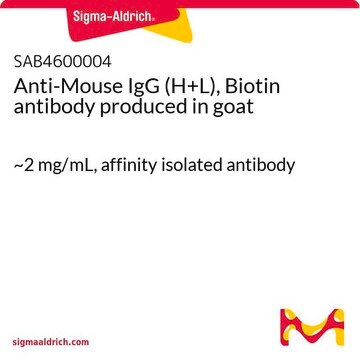17-499
Phosphorylation Explorer Pack Sample Kit
This Antibody pack contains Anti-phosphotyrosine Antibody, Anti-Phosphoserine Antibody, validated for use in WB, IF, Flow, IHC, ELISA, ICC.
About This Item
Produits recommandés
Source biologique
mouse
Niveau de qualité
Clone
4A4
4G10® Platinum
Fabricant/nom de marque
Upstate®
Technique(s)
ELISA: suitable
activity assay: suitable (kinase and phosphatase)
flow cytometry: suitable
immunocytochemistry: suitable
immunofluorescence: suitable
immunohistochemistry: suitable
western blot: suitable
Conditions d'expédition
dry ice
Description générale
The development of the anti-phosphotyrosine, clone 4G10 in 1989 was a monumental discovery for researchers. 4G10 was the first and is the best single monoclonal antibody for the detection tyrosine phosphorylation. 4G10 is well known for its sensitivity and its ability to detect multiple tyrosine phosphorylations on numerous substrates. It has been validated by thousands of scientific and medical researchers in virtually every application and tyrosine target over the past 2 decades. To improve on something that hundred have tried and no one has succeeded, we pooled 4G10 with the next most highly regarded anti-phosphotyrosine, clone PY20 to make 4G10 Platinum. PY20 itself is a very poor substitute for 4G10, but its additive effect allow for a greater level of detection on more substrates that even 4G10 alone was not capable of.
4A4
The identification of protein phosphorylation as a regulatory mechanism originated from studies by Fischer and Krebs in the mid 1950s that later earned them the 1992 Nobel prize. It is the major mechanism for the regulation of diverse cellular processes including cell division, protein synthesis, transcriptional regulation and neurotransmission. The steady state phosphorylation of any given substrate is governed by the opposing activities of kinases and phosphatases. It is now believed that a third of all eukaryotic cellular proteins are phosphorylated and that the majority of all phosphorylation events occur on serine and threonine residues (greater than 95%).
Application
Signaling
General Post-translation Modification
Composants
Description de la cible
Stockage et stabilité
Remarque sur l'analyse
Positive Antigen Control: Catalog #12-302, EGF-stimulated A431 cell lysate. Add 2.5µL of 2-mercaptoethanol/100µL of lysate and boil for 5 minutes to reduce the preparation. Load 20µg of reduced lysate per lane for mingels.
Informations légales
Clause de non-responsabilité
Code de la classe de stockage
10 - Combustible liquids
Certificats d'analyse (COA)
Recherchez un Certificats d'analyse (COA) en saisissant le numéro de lot du produit. Les numéros de lot figurent sur l'étiquette du produit après les mots "Lot" ou "Batch".
Déjà en possession de ce produit ?
Retrouvez la documentation relative aux produits que vous avez récemment achetés dans la Bibliothèque de documents.
Notre équipe de scientifiques dispose d'une expérience dans tous les secteurs de la recherche, notamment en sciences de la vie, science des matériaux, synthèse chimique, chromatographie, analyse et dans de nombreux autres domaines..
Contacter notre Service technique








